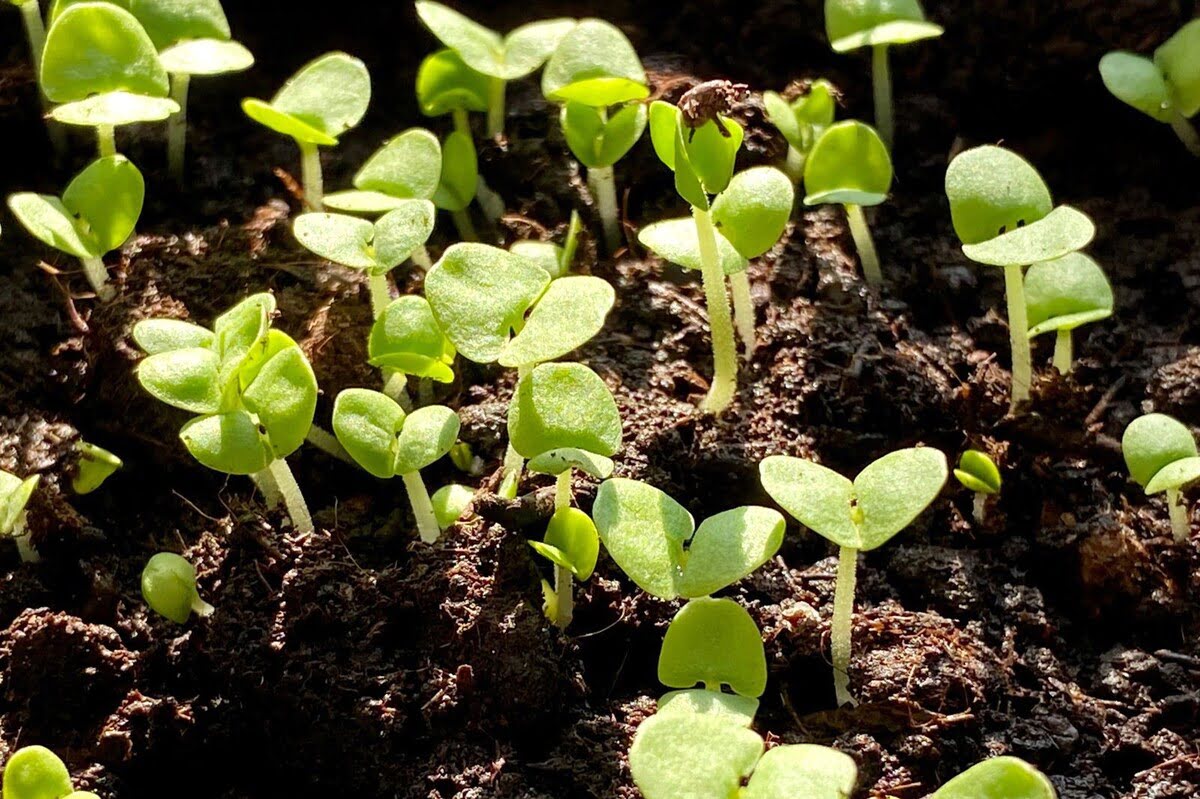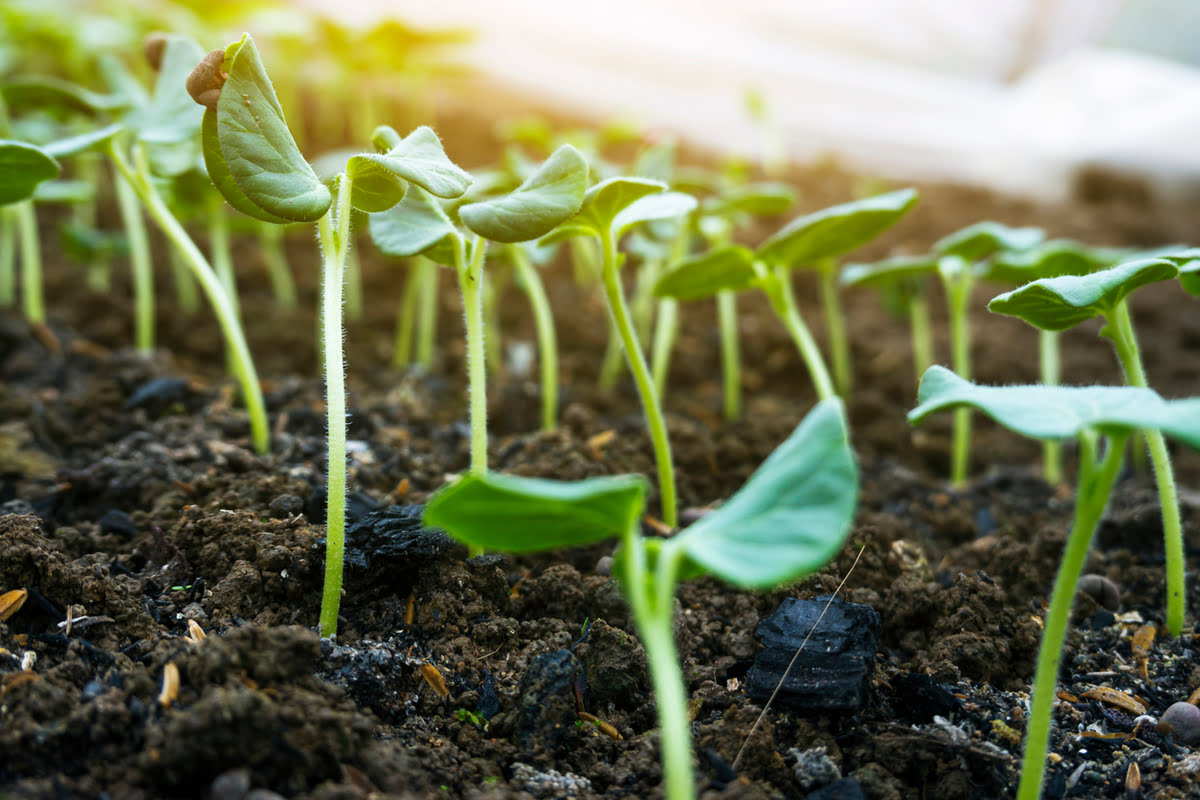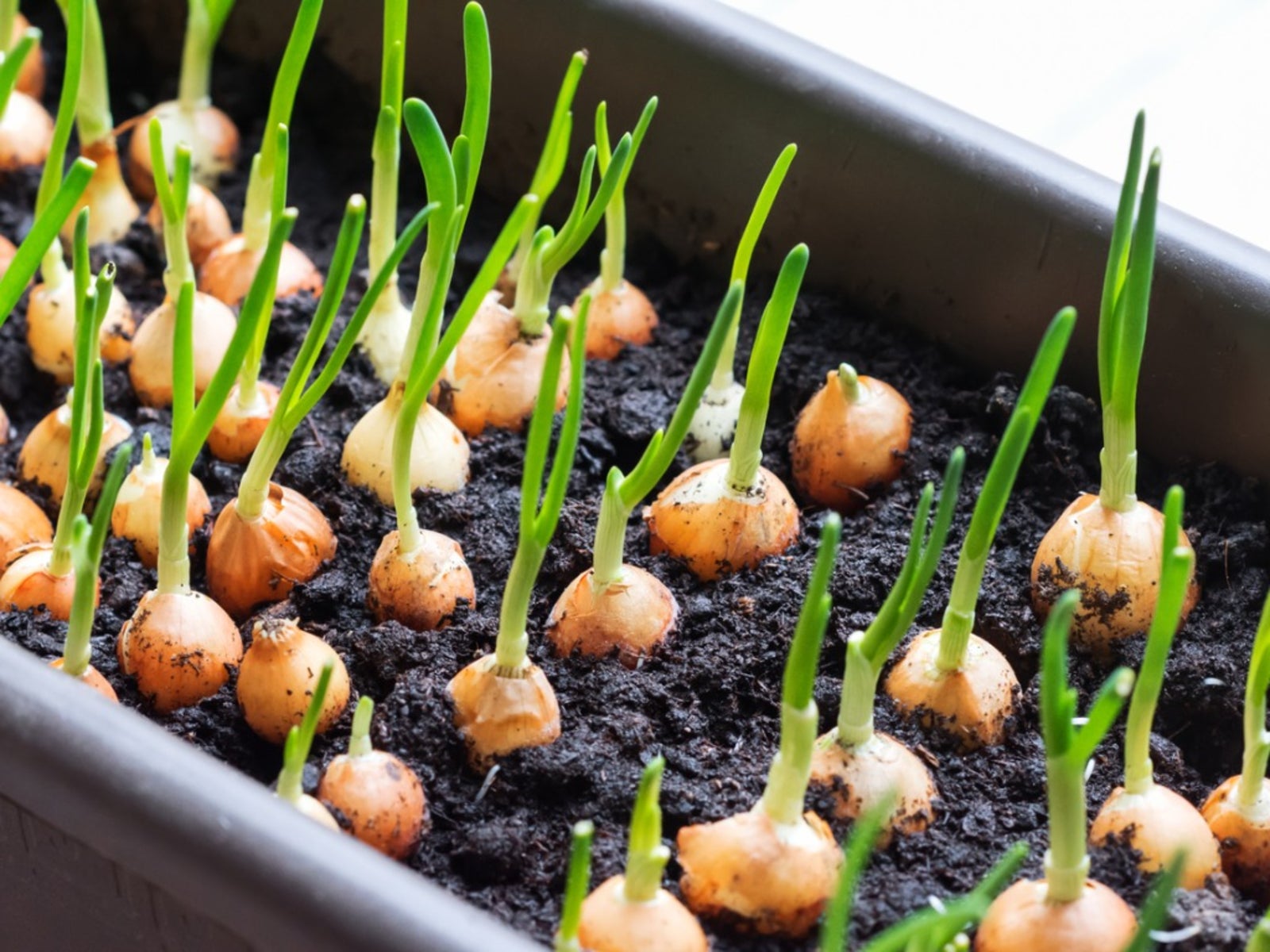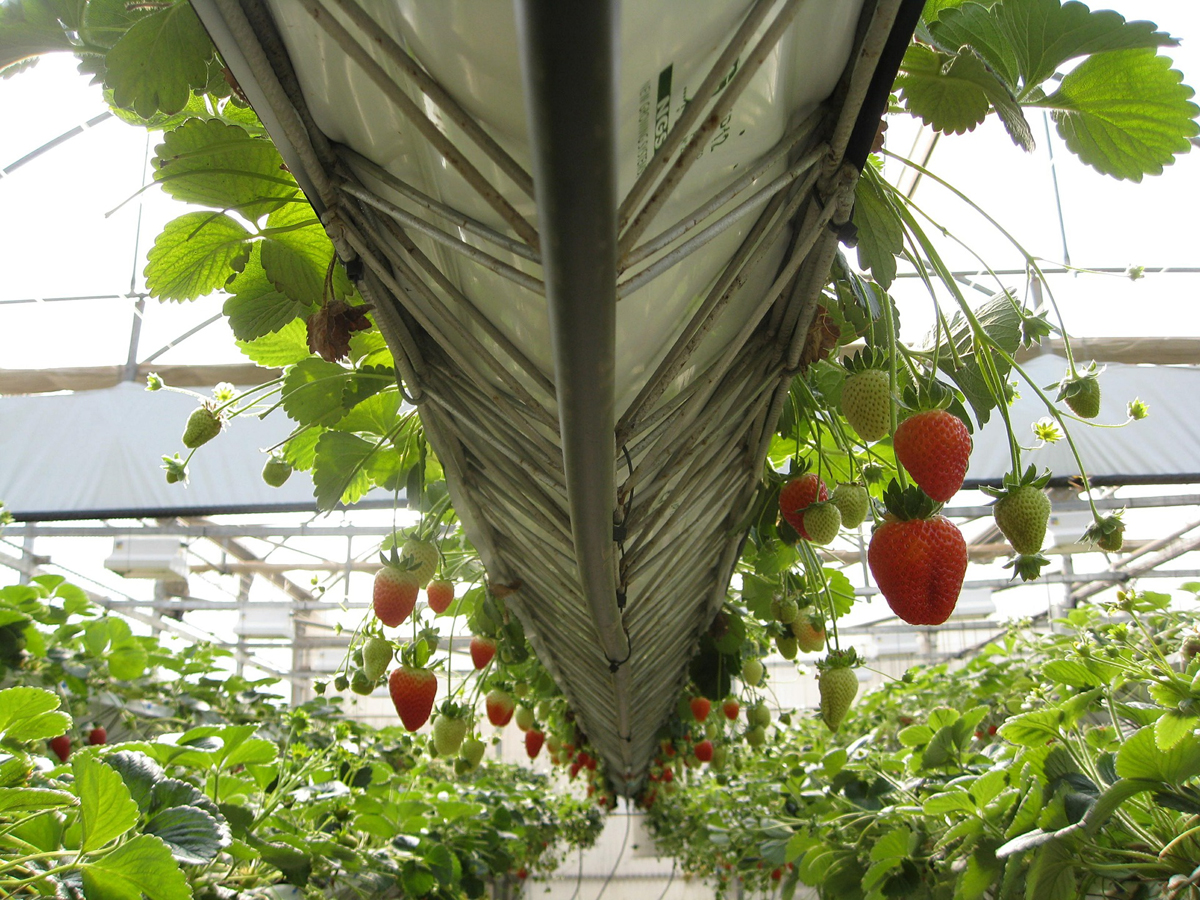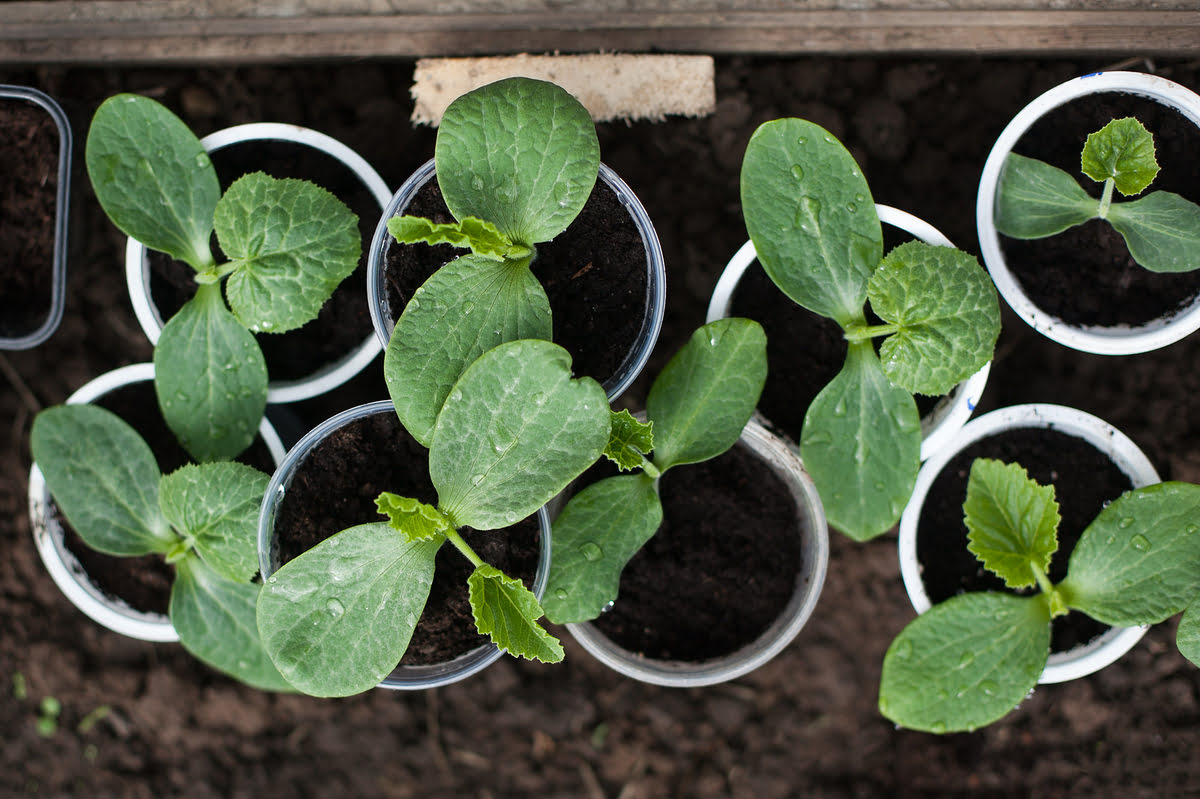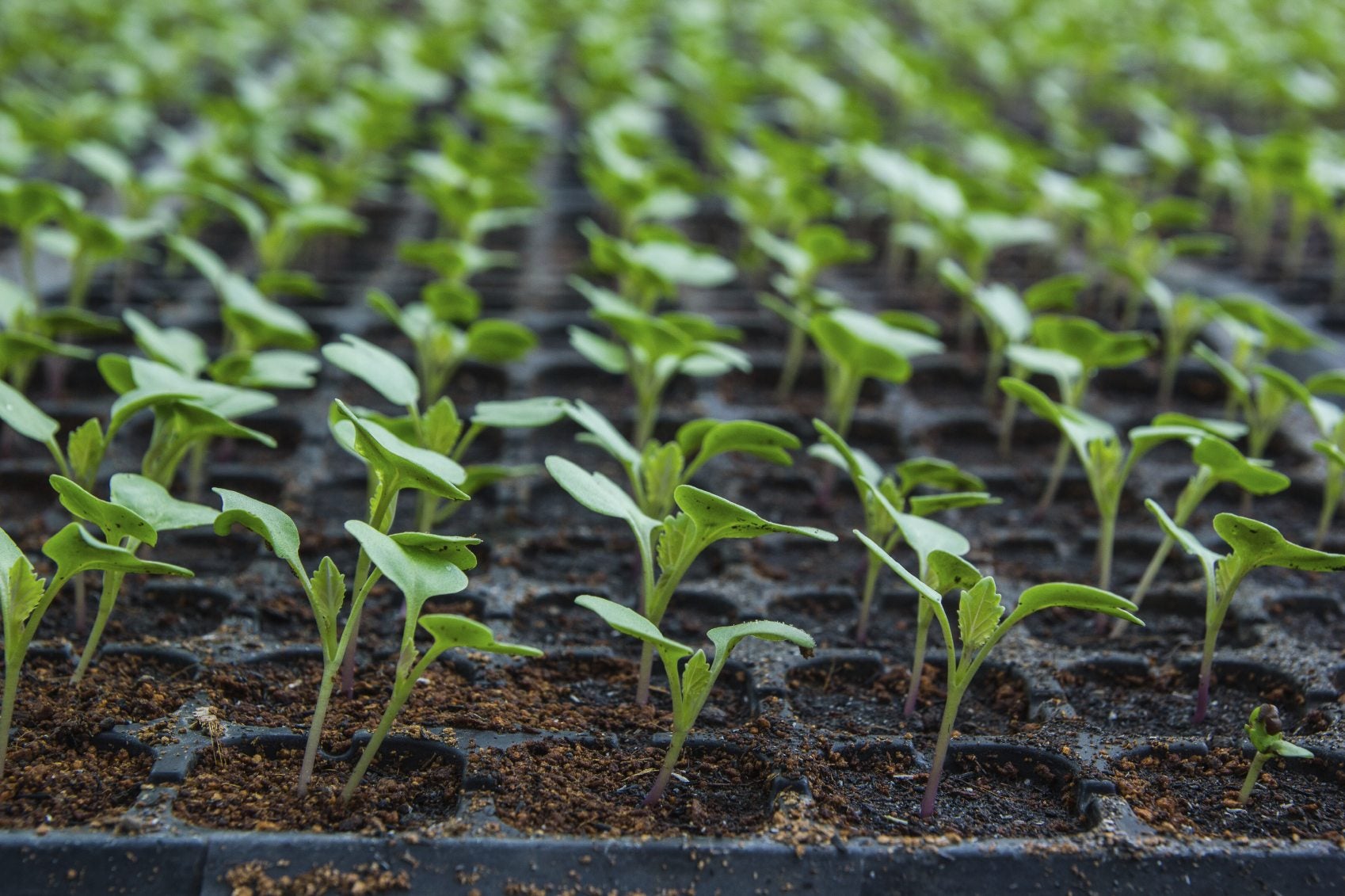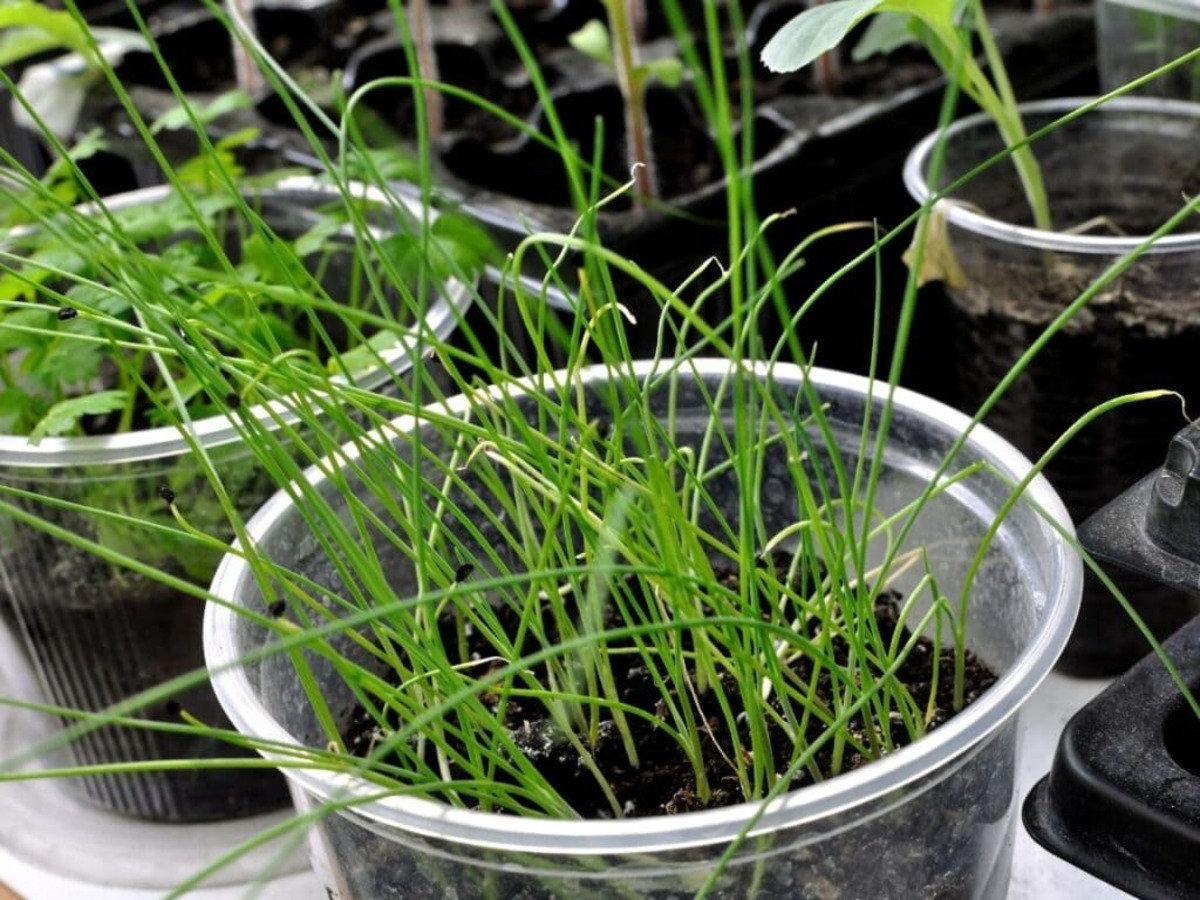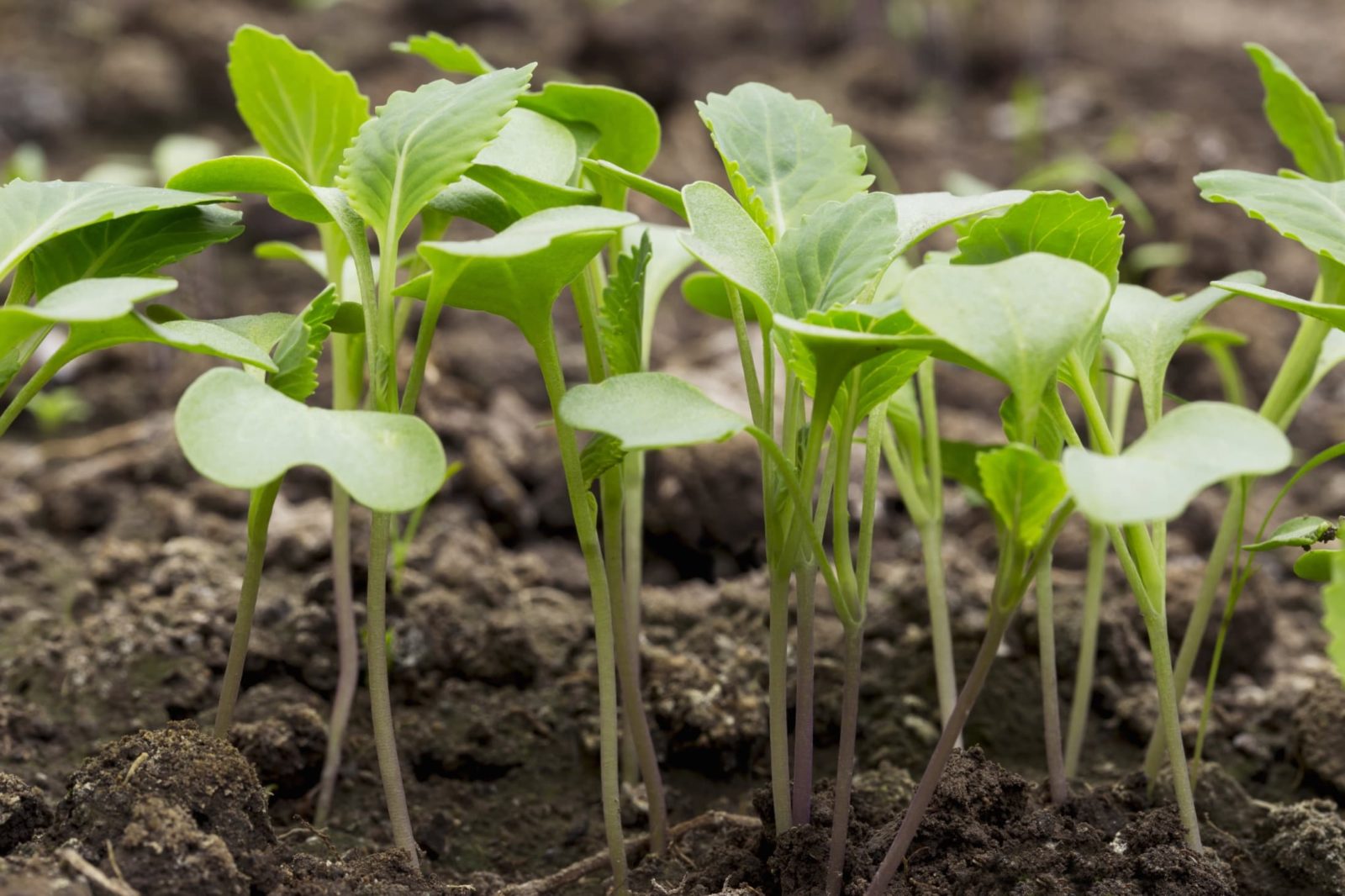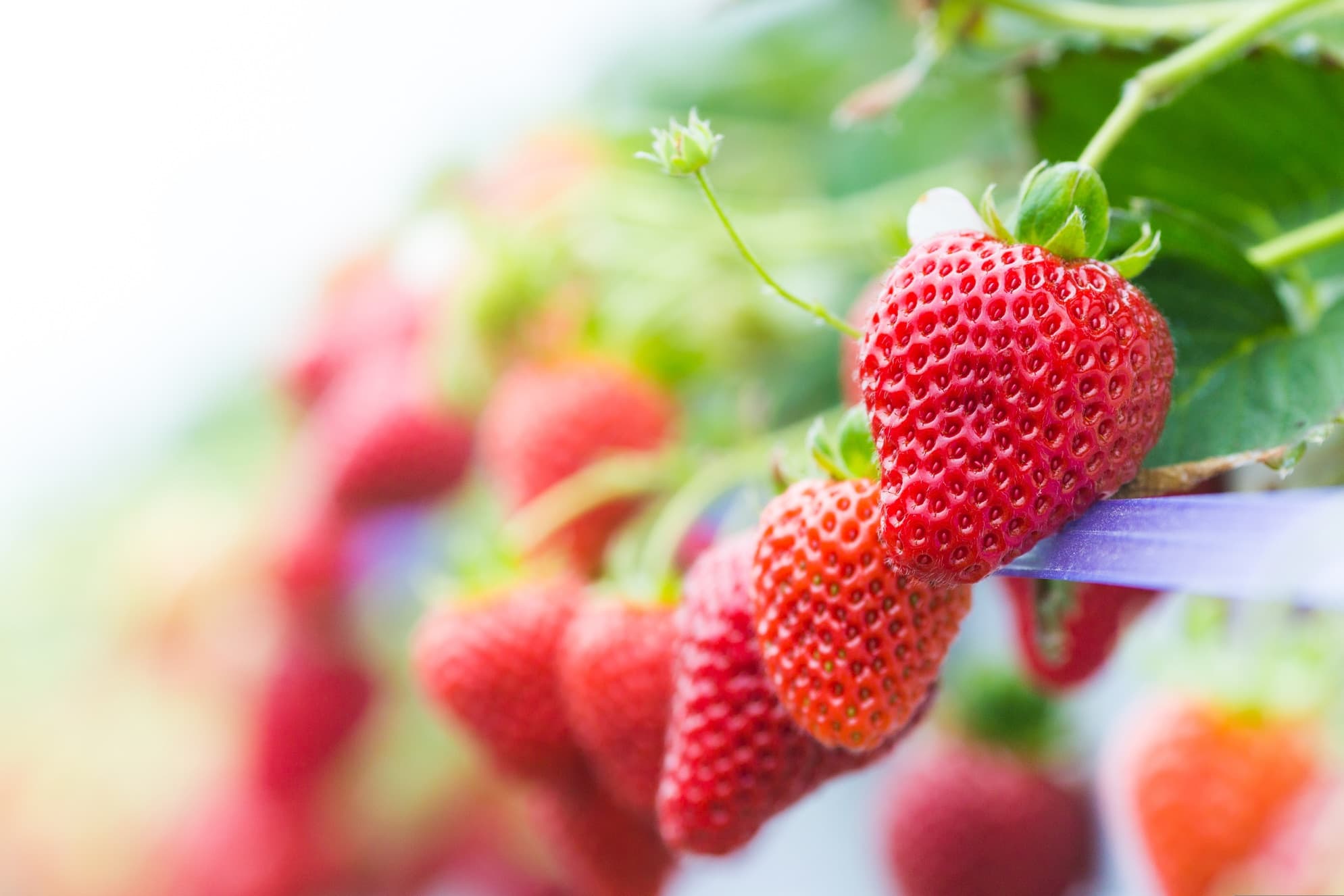Home>Types of Gardening>Edible Gardening>How To Plant Strawberry Seedlings
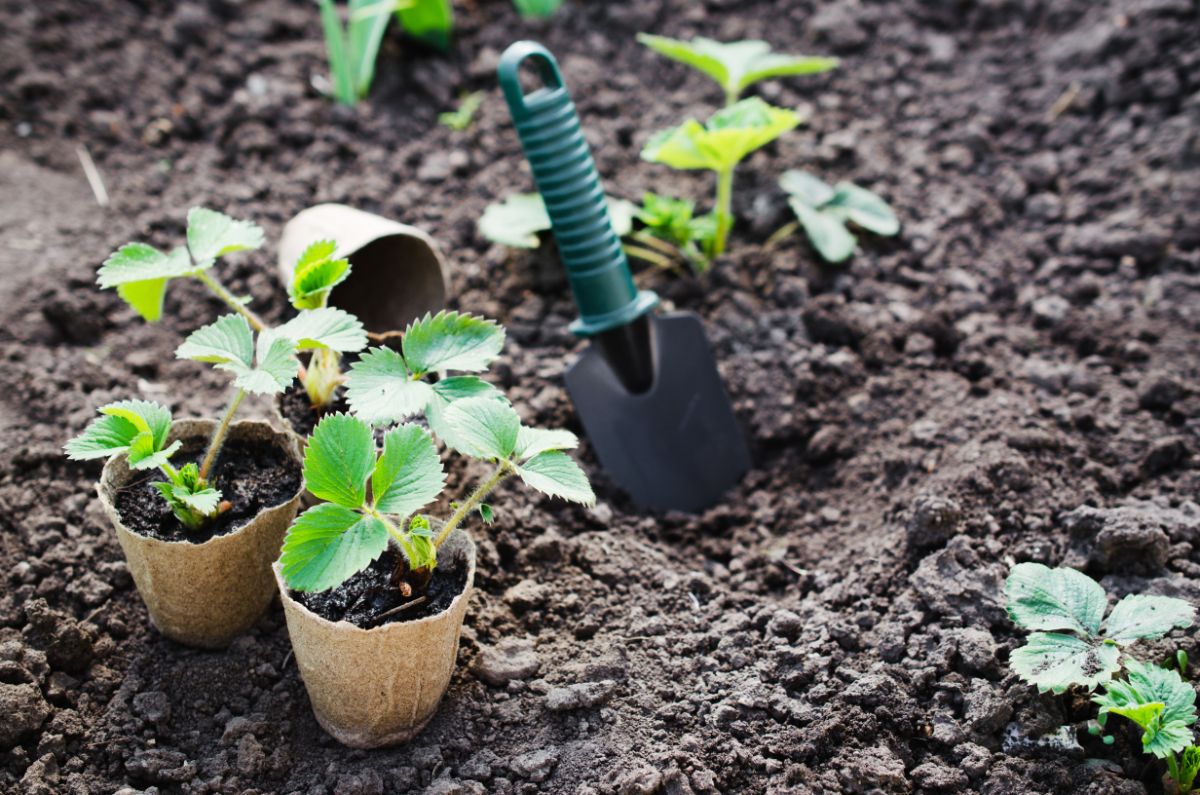

Edible Gardening
How To Plant Strawberry Seedlings
Published: December 31, 2023
Learn how to plant strawberry seedlings in your garden and start your edible gardening journey today. Follow our step-by-step guide for successful planting and growing.
(Many of the links in this article redirect to a specific reviewed product. Your purchase of these products through affiliate links helps to generate commission for Chicagolandgardening.com, at no extra cost. Learn more)
Table of Contents
Introduction
Welcome to the wonderful world of edible gardening! If you're looking to add a delightful and rewarding plant to your garden, then planting strawberry seedlings is an excellent choice. Strawberries are not only a delicious treat but also a joy to grow. In this comprehensive guide, we will walk you through the step-by-step process of planting and caring for strawberry seedlings, from choosing the right location to harvesting the sweet, juicy fruits.
Whether you're a seasoned gardener or just starting out, growing strawberries can be a fulfilling experience. There's something truly special about plucking a ripe, sun-kissed strawberry straight from the plant and savoring its delectable flavor. By following the tips and techniques outlined in this guide, you'll be well on your way to enjoying an abundant harvest of homegrown strawberries.
So, roll up your sleeves, grab your gardening tools, and let's embark on this exciting journey of planting and nurturing strawberry seedlings. Get ready to witness the magic of nature as you cultivate these delightful fruits right in your own backyard. Let's dive in and discover the art of growing luscious strawberries!
Choosing the Right Location
Before diving into the planting process, it’s crucial to select the ideal location for your strawberry patch. Strawberries thrive in sunny, well-drained areas, so scout your garden for a spot that receives at least 6-8 hours of sunlight per day. Adequate sunlight not only encourages robust growth but also enhances the flavor of the berries, resulting in sweeter and juicier fruits.
Additionally, ensure that the chosen location offers protection from strong winds, as excessive wind can damage the delicate strawberry plants. If possible, select a site with good air circulation to minimize the risk of fungal diseases. While strawberries can tolerate a range of soil types, they prefer slightly acidic soil with a pH of 5.5 to 6.8. Conduct a soil test to assess the pH level and make amendments as necessary to create an optimal growing environment for your strawberry seedlings.
When considering the layout of your strawberry patch, prioritize accessibility for watering, weeding, and harvesting. Raised beds or elevated planters can be excellent options, as they provide good drainage and make maintenance tasks more manageable. Furthermore, planting strawberries in raised beds can deter pests and critters from feasting on your precious fruits.
By carefully selecting a sunny, sheltered, and well-drained location with suitable soil conditions, you’ll set the stage for your strawberry seedlings to flourish and yield an abundant harvest of delectable berries.
Preparing the Soil
Once you’ve identified the perfect spot for your strawberry patch, it’s time to prepare the soil to create an optimal growing environment for your seedlings. Start by clearing the area of any weeds, rocks, or debris that may impede the growth of your strawberry plants. This initial step sets the stage for healthy root development and prevents competition for nutrients and water.
Next, enrich the soil with organic matter to improve its texture and fertility. Incorporating well-rotted compost or aged manure into the top layer of the soil enhances its ability to retain moisture while providing essential nutrients for the growing plants. Additionally, organic matter aids in promoting beneficial microbial activity in the soil, creating a thriving ecosystem for your strawberry seedlings.
Before planting, it’s advisable to perform a soil test to assess its nutrient levels and pH. Based on the test results, you can make targeted amendments to ensure that the soil provides an ideal growing medium for your strawberries. Adjusting the pH, adding specific nutrients, or balancing the soil composition can significantly impact the overall health and productivity of your strawberry plants.
Consider incorporating a balanced organic fertilizer into the soil to provide a nutrient boost for your seedlings. Opt for a fertilizer with a higher potassium content to encourage robust root development and flowering, ultimately leading to a bountiful harvest of strawberries. Carefully follow the application instructions to avoid over-fertilization, which can harm the plants.
By diligently preparing the soil and enriching it with organic matter and essential nutrients, you’ll create a nurturing foundation for your strawberry seedlings to thrive and produce an abundance of delectable berries.
Planting the Seedlings
Now that your soil is primed for planting, it’s time to introduce your strawberry seedlings to their new home. Before transplanting the seedlings, it’s beneficial to water them thoroughly to ensure that they are well-hydrated and ready for the transition. Choose a cool, overcast day or plan to plant in the late afternoon to minimize stress on the seedlings during the initial stages of transplanting.
When planting, space the seedlings approximately 12-18 inches apart in rows that are 2-3 feet apart, allowing ample room for the plants to spread and receive adequate sunlight and airflow. Gently loosen the roots of each seedling before placing them in the soil, ensuring that the crown – the point where the roots meet the stems – is level with the soil surface. Planting too deeply can lead to rot, while positioning the crown too high may cause the roots to dry out.
As you position the seedlings, be mindful of the runners – horizontal stems that extend from the mother plant – and aim to direct them in the desired direction to facilitate future propagation and expansion of your strawberry patch. Tucking the runners into the soil or guiding them along the designated planting area encourages the development of new daughter plants, contributing to the longevity and productivity of your strawberry patch.
After planting, water the seedlings gently but thoroughly to settle the soil around the roots and provide essential moisture for their establishment. Consider applying a layer of organic mulch, such as straw or shredded leaves, around the plants to conserve moisture, suppress weed growth, and shield the developing fruits from direct contact with the soil.
By carefully planting and nurturing your strawberry seedlings, you’re laying the groundwork for a flourishing strawberry patch that will yield an abundance of succulent berries for seasons to come.
Watering and Fertilizing
Proper watering and fertilizing practices are essential for nurturing healthy, productive strawberry plants. Consistent and adequate moisture is crucial, especially during the flowering and fruiting stages. Water the plants deeply, ensuring that the soil is consistently moist but not waterlogged. A drip irrigation system or soaker hoses can be effective methods for delivering water directly to the roots while minimizing moisture on the foliage, which can contribute to disease development.
Applying a balanced, organic fertilizer when the plants begin to bloom can bolster their growth and fruit production. Look for a fertilizer with a higher potassium content to promote robust flowering and fruit development. Avoid over-fertilizing, as this can lead to excessive foliage growth at the expense of fruit production. Follow the manufacturer’s recommendations for application rates and frequency, and water the plants after fertilizing to help distribute the nutrients evenly in the soil.
During the growing season, monitor the moisture levels in the soil regularly, especially during hot, dry periods. Adjust your watering schedule as needed to ensure that the plants receive sufficient hydration, particularly as the fruits begin to form and swell. Mulching around the plants helps retain soil moisture and reduces the frequency of watering, while also providing a barrier between the fruits and the soil, preventing them from rotting or becoming contaminated.
As the strawberry plants continue to produce runners and expand, maintaining a consistent fertilization schedule is vital to support their vigor and fruitfulness. Applying a top dressing of compost or a balanced organic fertilizer in late summer can supply the plants with the nutrients they need to carry them through the remainder of the growing season and prepare them for the following year’s harvest.
By implementing a well-managed watering regimen and providing appropriate fertilization, you’ll empower your strawberry plants to thrive and yield an abundance of delectable, sun-ripened berries.
Mulching and Weeding
Mulching and weeding are integral aspects of maintaining a healthy and productive strawberry patch. Applying a layer of organic mulch around the plants serves multiple purposes, including moisture retention, weed suppression, and protection of the developing fruits. Organic mulching materials, such as straw, shredded leaves, or pine needles, create a favorable microclimate around the plants, moderating soil temperature and reducing moisture evaporation.
By mulching the strawberry patch, you can effectively inhibit weed growth, which not only competes with the plants for essential nutrients and water but also harbors pests and diseases. Regularly inspect the mulched area for any emerging weeds and promptly remove them to prevent them from encroaching on the strawberry plants. Hand weeding or using a handheld hoe around the plants can help maintain a clean and weed-free growing environment.
When applying mulch, ensure that it is spread evenly around the plants, covering the soil but not touching the crowns. This practice helps prevent excess moisture accumulation around the crown, reducing the risk of rot and fungal diseases. Additionally, the layer of mulch acts as a protective barrier, preventing the strawberries from coming into direct contact with the soil, which can lead to spoilage and contamination.
Throughout the growing season, periodically check the mulch layer and replenish it as needed to maintain an adequate thickness. As the mulch decomposes, it contributes organic matter to the soil, enriching its structure and fertility. Come winter, a thicker layer of mulch can provide insulation and protection for the dormant plants, shielding them from extreme temperature fluctuations and frost heaving.
By diligently mulching and weeding your strawberry patch, you’ll create an optimal growing environment that promotes the health and productivity of your plants, ultimately leading to a plentiful harvest of delectable strawberries.
Protecting the Plants
Ensuring the well-being of your strawberry plants involves safeguarding them from potential threats such as pests, diseases, and adverse weather conditions. Implementing proactive measures to protect your plants can significantly contribute to their overall health and productivity.
Pests, including aphids, slugs, and birds, are common adversaries of strawberry plants. To deter these pests, consider installing physical barriers such as bird netting to shield the ripening fruits from avian intruders. Additionally, regularly inspect the plants for signs of pest infestation and promptly address any issues to prevent the pests from causing widespread damage.
Applying organic pest control methods, such as introducing beneficial insects or using insecticidal soaps, can help manage pest populations without compromising the health of the plants or the safety of the fruits. Furthermore, practicing crop rotation and maintaining good garden hygiene can disrupt pest life cycles and reduce the likelihood of recurring infestations.
In terms of disease prevention, proper air circulation and moisture management are crucial for minimizing the risk of fungal diseases such as powdery mildew and gray mold. Prune overcrowded foliage to enhance airflow and remove any diseased or damaged plant material to prevent the spread of pathogens. Additionally, avoid overhead watering, as wet foliage can create an environment conducive to fungal growth.
During periods of extreme heat or inclement weather, providing shade cloth or temporary shelter can shield the plants from excessive sun exposure or heavy rainfall, reducing stress and potential damage. Be vigilant in monitoring weather forecasts and take preemptive measures to protect the plants from adverse conditions.
By taking a proactive approach to safeguarding your strawberry plants from pests, diseases, and unfavorable weather, you’ll create a resilient and thriving growing environment that supports the sustained health and productivity of your strawberry patch.
Harvesting the Strawberries
As your strawberry plants mature and the fruits reach their peak ripeness, the eagerly anticipated time for harvesting arrives. Harvesting strawberries at the optimal stage of ripeness ensures the best flavor, sweetness, and texture, offering a delectable reward for your diligent care and attention to the plants.
When the strawberries attain their full color and are firm to the touch, it’s time to pluck them from the plants. Gently grasp the ripe berries and twist them off the stem, taking care not to damage the surrounding fruit or the plant itself. Harvesting in the morning when the temperatures are cooler is ideal, as the fruits are firmer and the flavors more concentrated.
As you gather the ripe strawberries, inspect the plants thoroughly and harvest the fruits regularly to prevent overripening or spoilage. Leaving overripe or rotting berries on the plants can attract pests and compromise the overall health of the strawberry patch. Discard any damaged or spoiled fruits to maintain a clean and disease-free growing environment.
Following the harvest, promptly refrigerate or consume the freshly picked strawberries to preserve their quality and flavor. If refrigerating, store the strawberries unwashed in a single layer to prevent moisture buildup, which can lead to mold formation. Before consuming the fruits, gently rinse them under cool water and allow them to air dry to maintain their freshness and flavor.
Throughout the harvesting season, continue to monitor the plants for ripe fruits, ensuring that no berries are overlooked or left to spoil. The bountiful harvest of succulent strawberries serves as a delightful culmination of your efforts and dedication to nurturing the plants from seedlings to flavorful, sun-ripened fruits.
By embracing the art of harvesting strawberries at their peak ripeness and savoring the fruits of your labor, you’ll experience the true essence of homegrown goodness and the unparalleled satisfaction of enjoying nature’s sweetest rewards.
